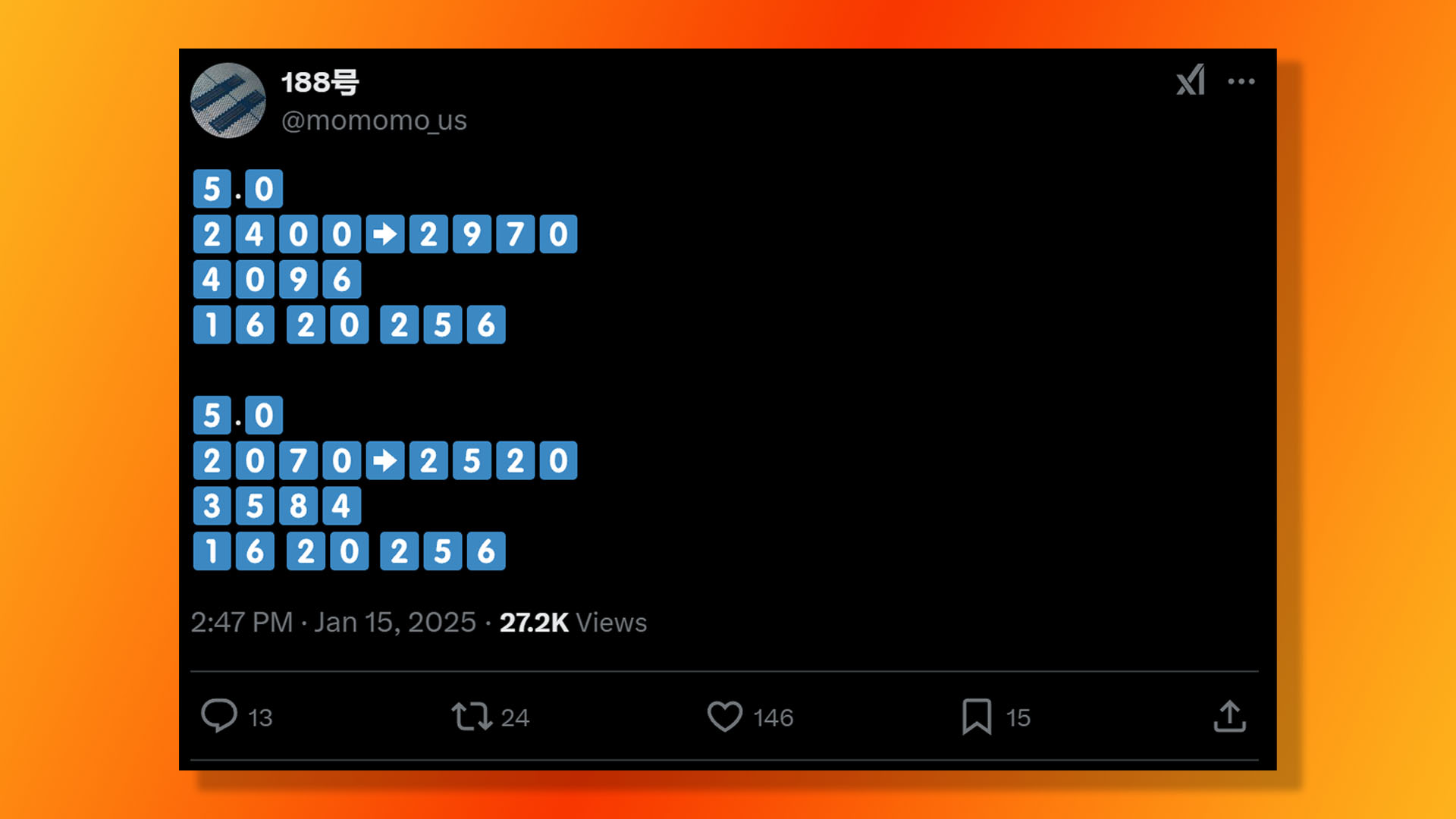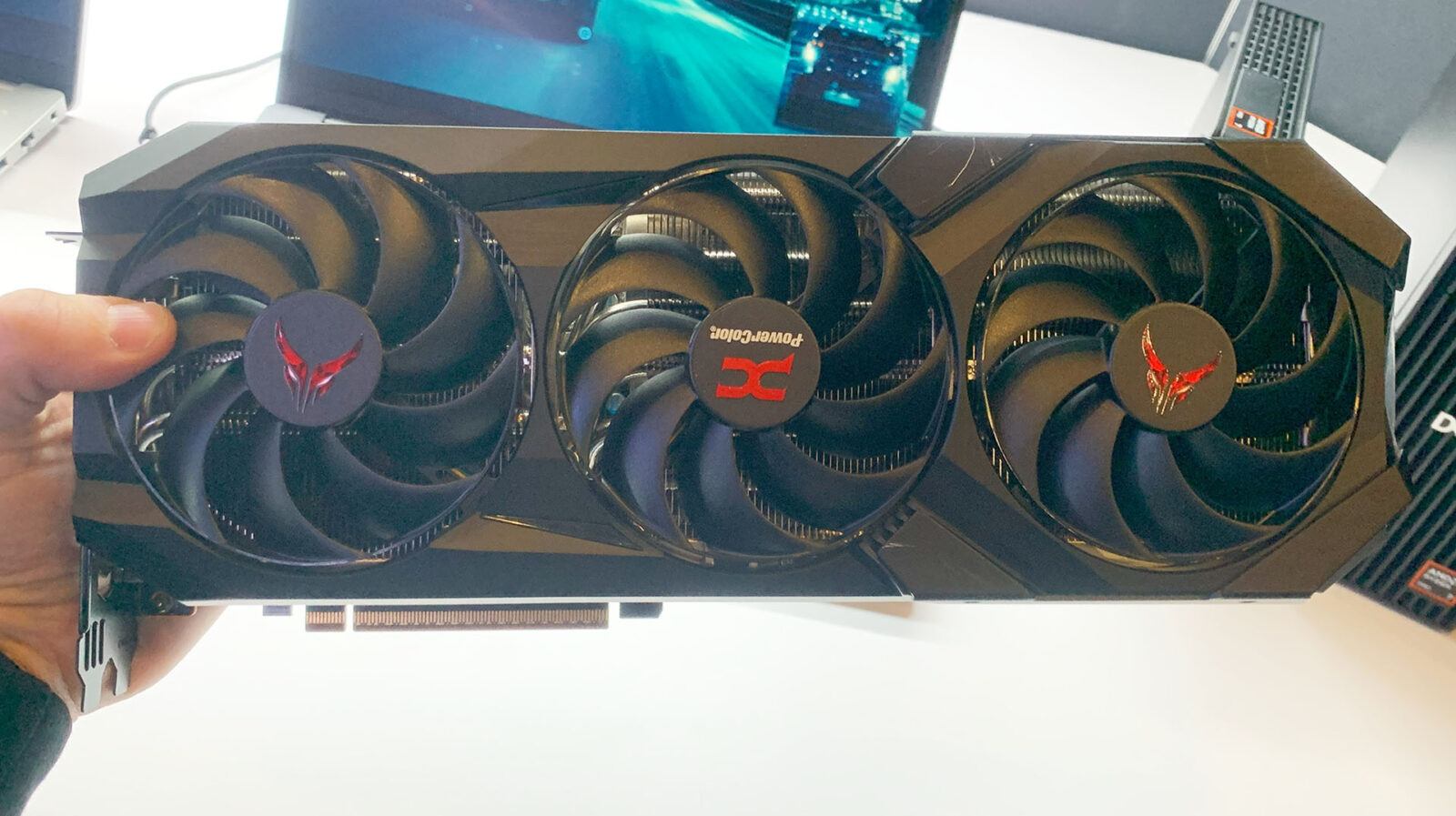AMD has been curiously tight-lipped about the details of its recently-announced new GPUs, but this AMD Radeon RX 9070 XT specs leak appears to reveal what the company has waiting in the wings. Not only that, but the Radeon RX 9070 specs have also appeared in the same leak, with both GPUs looking like solid mid-range contenders, if AMD can get the pricing right.
There’s no word on the official Radeon RX 9070 XT release date yet, but Nvidia has already confirmed the RTX 5070 release date is February 2025, so AMD is going to need to get its new GPUs out sooner rather than later. The graphics cards also clearly already exist, as we spotted many Radeon RX 9070 XT cards while we were at CES earlier this month, including the PowerColor card pictured above. But what’s potentially coming with these new GPUs? Let’s dig into this latest specs leak.
As always with leaks, none of this has been officially confirmed by AMD, so we’re still very much at the rumor stage with the specs of these GPUs. This latest bit of gossip, though, comes from regular tech leaker momomo_us, who appears to have revealed the specs of the two new AMD GPUs in a post on X (formerly Twitter) using the medium of emojis. There’s no mention of the names of the GPUs, or the specs to which the numbers refer, but you can work it out, as they look nothing like the RTX 5070 specs.
At the top of the post, the higher numbers appear to refer to the new Radeon RX 9070 XT. We reckon the top “5.0” number refers to the use of a PCIe 5.0 interface, apparently knocking down previous rumors that the new cards would still use the PCIe 4.0 bus. Next is a pair of numbers with an arrow between them, which look as though they refer to the base clock and boost clock of 2,400MHz and 2,970MHz respectively.

The next figure is “4,096” which looks very much like the number of stream processors inside the GPU. Then, finally, there’s a set of three numbers – 16, 20, and 256 – which looks like it refers to the memory setup. That would mean 16GB of 20Gbps VRAM attached to a 256-bit-wide memory interface. Add it all up, and the 9070 XT specs look like this:
AMD Radeon RX 9070 XT specs
| AMD Radeon RX 9070 XT | |
| Stream processors | 4,096 |
| Base clock | 2,400MHz |
| Boost clock | 2,970MHz |
| VRAM | 16GB 20Gbps GDDR6 |
| Memory interface | 256-bit |
| Interface | PCIe 5.0 |
To put those figures in context, the Radeon RX 7800 XT has 3,840 stream processors, as well as 16GB of GDDR6 VRAM and a 256-bit memory bus, so it’s likely that the 9070 XT is going to be in the same sub-$500 league.
However, the 9070 XT will also have some other major benefits over the 7800 XT, including enhanced AI and ray tracing performance, as well as support for FSR 4. We were very impressed by the latter in our FSR 4 hands on, with the new AI-based upscaling tech looking significantly better than FSR 3. The specs above appear to corroborate previous 9070 XT rumors as well, which again suggested the new GPU would have 16GB of VRAM and 64 compute units, which we speculated would lead to a total of 4,096 stream processors.
Meanwhile, the Radeon RX 9070 specs are very similar, but with lower clock speeds and fewer stream processors. If the information in that post by momomo_us is correct, then these are the Radeon RX 9070 specs:
AMD Radeon RX 9070 specs
| AMD Radeon RX 9070 | |
| Stream processors | 3,584 |
| Base clock | 2,070MHz |
| Boost clock | 2,520MHz |
| VRAM | 16GB 20Gbps GDDR6 |
| Memory interface | 256-bit |
| Interface | PCIe 5.0 |
If AMD can genuinely improve the ray tracing performance on these new GPUs compared to their predecessors, and persuade enough game developers to implement FSR 4 in their games, then AMD may just be in with a chance, as long as the GPUs are priced right.
While we wait for all the official details to emerge, you can read our guide to the best graphics card, which outlines all the best options right now to suit every budget.











Leave a Reply